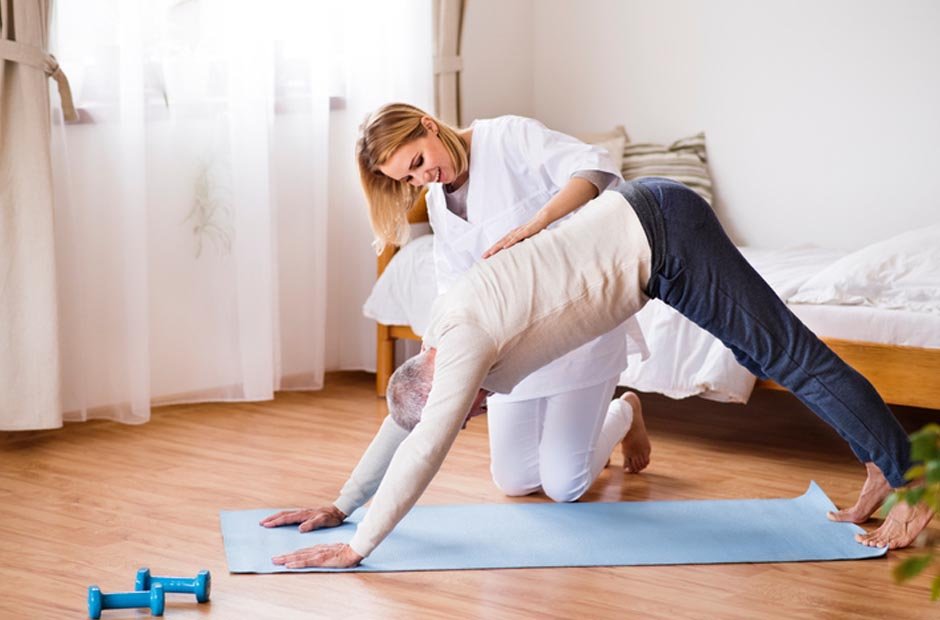Yoga provides various physical and mental health benefits. Some physicians have embraced physical therapy yoga as a tool that can be used to help promote healing. Here are nine ways yoga can be used as a physical therapy:
1. Strength Building
Physical therapy yoga incorporates strength-building exercises that can restore strength to weak or atrophied muscles. Physical therapists can tailor yoga practices to target specific muscle groups requiring rehabilitation. These exercises can help patients regain muscle strength and balance, improving mobility and functionality. Patients can practice simplified versions of weight-bearing poses like the downward dog, which therapists modify to be more challenging over time. The controlled and gradual progression of exercises allows for targeted muscle development and safe rehabilitation.
2. Improved Flexibility
Yoga poses that stretch different muscle groups can help improve joint mobility and increase patients’ range of motion. The gentle stretching and holding of poses in yoga reduces muscle tension, restoring flexibility to the body. Flexibility-enhancing yoga practices can benefit patients recovering from surgery, neurological conditions, or injuries that limit mobility.
3. Pain Management
Yoga fosters mindfulness and teaches relaxation techniques that can reduce pain and discomfort. The exercises that stretch the muscles can also alleviate pain. Yoga poses like the cobra, downward dog, and cat pose strengthen the back, relieving back pain. Exercises like the extended triangle pose are good for knee pain relief. Physical therapists may recommend the boat pose and the child’s pose to loosen the hips and reduce pain. Using yoga for pain management can also be beneficial for patients with conditions like osteoarthritis, fibromyalgia, or chronic back pain.
4. Improved Balance and Posture
Yoga emphasizes body awareness and alignment, which helps restore the body’s balance and improves posture. Through yoga, patients can develop core strength and improve their balance and posture, reducing the risk of falls. Yoga exercises that enhance the body’s stability also minimize the strain on muscles and joints, particularly for patients recovering from back, neck, or lower limb injuries.
5. Stress Reduction
The stress associated with injuries, surgery, and chronic conditions can hinder recovery. Yoga physical therapists may teach patients breathing techniques to enhance relaxation and reduce stress. Yoga’s meditative and mindfulness practices can help patients manage stress and anxiety, ultimately speeding recovery.
6. Faster Healing
Incorporating yoga into physiotherapy treatment trains muscles for proper function and flexibility, aiding faster recovery from injuries. Flexible muscles and joints are also less likely to be stiff or immobile during healing. Meditation and relaxation techniques can reduce stress hormone levels in the body, promoting faster recovery. Lower stress levels also reduce inflammation and improve the body’s immune function.
7. Improved Circulation
Yoga poses that involve inversions, such as the downward-facing dog or other upside-down poses, can enhance blood circulation. These postures facilitate blood circulation from the lower extremities to the heart, reducing the strain on the cardiovascular system. Controlled, deep breathing techniques enhance oxygen exchange, contributing to the delivery of key nutrients and oxygen to cells. Reducing the stress on the cardiovascular system can be beneficial for patients with heart disease and hypertension.
8. Improving Sleep
Yoga involves stretches that help relax tense muscles, alleviating stiffness and discomfort, which makes sleeping easier. Mindfulness exercises that reduce stress levels may also improve sleep quality. Yogic breathing techniques can enhance your lung capacity, improving oxygen circulation, which promotes relaxation and sleep. It can also improve your posture, preventing aches and pains that may interfere with sleep.
9. Post-surgery Rehabilitation
Physical therapists can adapt gentle yoga movements to help patients regain strength, flexibility, and mobility after surgery. Site-specific stretches and movements can reduce the risk of post-surgery complications like blood clots and muscle atrophy. Consult your healthcare provider before starting yoga post-surgery for medical clearance. Your yoga therapist may also ask about your medical history to tailor your routine to involve safe and appropriate exercises.
Enjoy the Healing Benefits of Physical Therapy Yoga
Yoga’s versatility and adaptability make it a useful physical therapy tool. By incorporating yoga into rehabilitation programs, patients can experience improved flexibility, strength, balance, and reduced pain. Physical therapy yoga also offers benefits for mental and emotional well-being, which contribute to healing. Book a consultation with yoga therapists near you for a personalized yoga therapy plan to promote healing.


